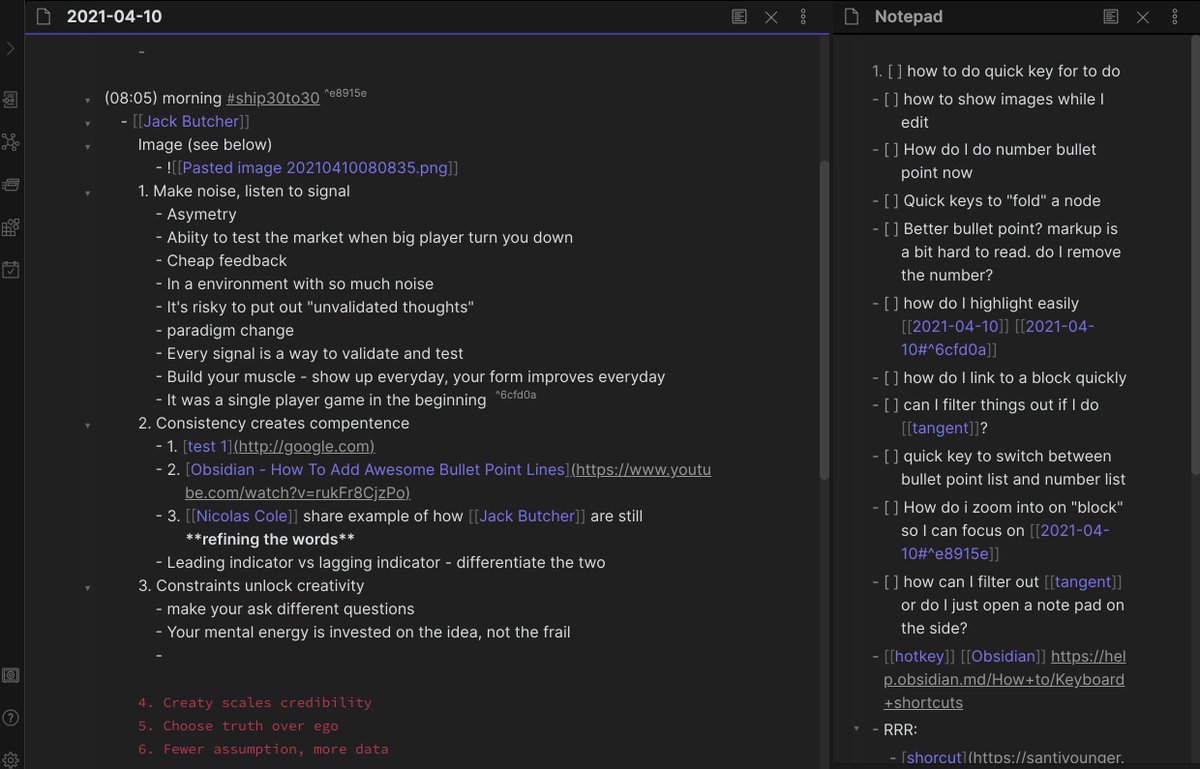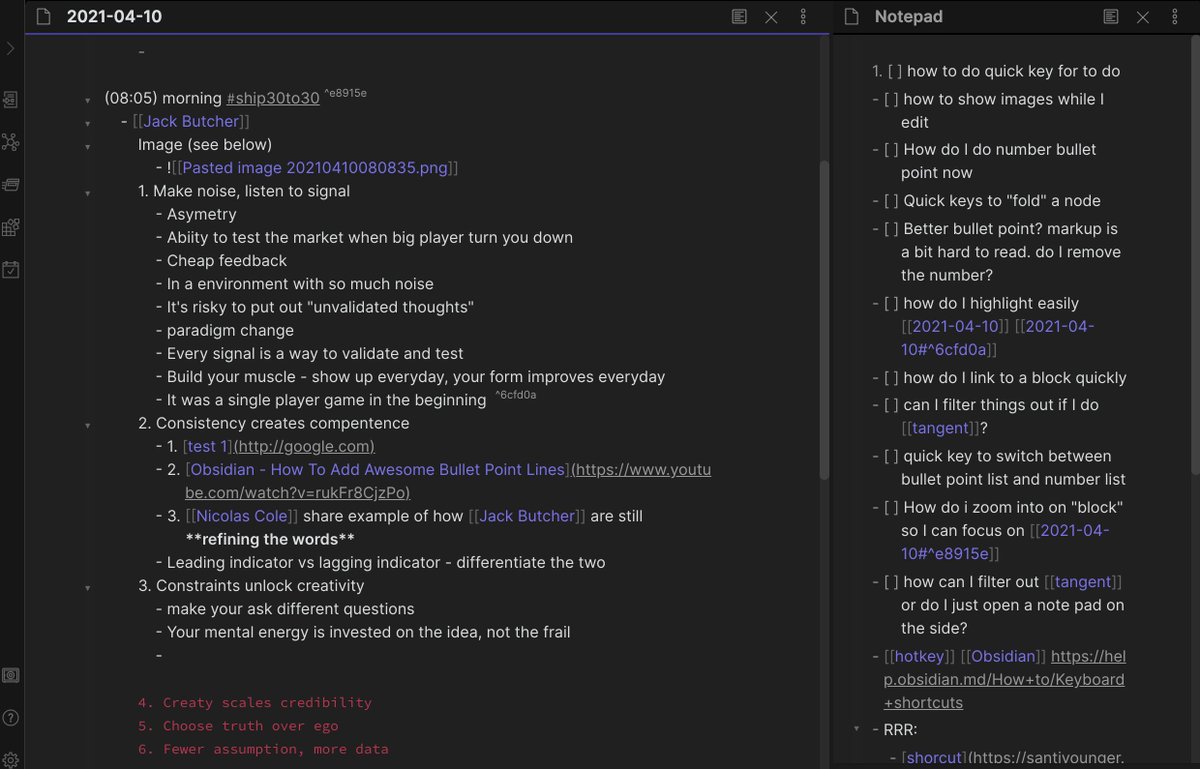
Learning Obsidian(@obsdmd) in 4 short hours
It's so easy to get sucked into the tech rabbit hole and end up spending hours on researching, instead of producing.
I wanted to share my process on how I usually onboard myself on any new technology.
It's very raw. I am on hour 4.
It's so easy to get sucked into the tech rabbit hole and end up spending hours on researching, instead of producing.
I wanted to share my process on how I usually onboard myself on any new technology.
It's very raw. I am on hour 4.

1/ Disclaimer: my goal is to get to a "sufficient" state so I can focus on producing, instead of tinkering. Avoiding "procrastination by learning".
By no means am I an expert, and I have every intention to continue to learn more.
By no means am I an expert, and I have every intention to continue to learn more.
2/ TLDR; summary -
•Focus on the problem - think "what am I solving?"
•Get feedback ASAP - test drive the tech against your use case, hack it however you can to see if it works for you
•Write down your pain point, solve it
And yes, this was written using Obsidian in h4.
•Focus on the problem - think "what am I solving?"
•Get feedback ASAP - test drive the tech against your use case, hack it however you can to see if it works for you
•Write down your pain point, solve it
And yes, this was written using Obsidian in h4.
3/ Now the details -
•Hour 0 - learned about [[Obsidian]] from @roamhacker and decided to give it a test run
•Hour 0 - learned about [[Obsidian]] from @roamhacker and decided to give it a test run
https://twitter.com/roamhacker/status/1380610315168182281?s=20
4/ Hour 1
•Hour 1 - I followed RoamHacker's tweet and chased down a few YouTube tutorials before I went to bed last night
•Hour 1 - I followed RoamHacker's tweet and chased down a few YouTube tutorials before I went to bed last night
https://twitter.com/roamhacker/status/1380798988438237184?s=20
5/ Hour 2
•Hour 2 - I downloaded Obsidian and set it up on my computer following this
•Hour 2 - I downloaded Obsidian and set it up on my computer following this
6/ Hour 3
•Hour 3 - I took a leap of faith ("I will figure this out") and used it during our #ship30to30 office hour with [[Jack Butcher]]. It was very rough, I didn't even know how to do bullet points and was Googling on the side.
•Hour 3 - I took a leap of faith ("I will figure this out") and used it during our #ship30to30 office hour with [[Jack Butcher]]. It was very rough, I didn't even know how to do bullet points and was Googling on the side.
7/ Still Hour 3
I couldn't focus on the office hour and do research at the same time, so I created a new page [[Notepad]] and listed out all my pain points as I use the tool. My plan is to unlock them and figure it out later.
You can see how rough it is here -
I couldn't focus on the office hour and do research at the same time, so I created a new page [[Notepad]] and listed out all my pain points as I use the tool. My plan is to unlock them and figure it out later.
You can see how rough it is here -

8/ Hour 4
•Hour 4 - will spend the next 2-3 hours (after I go out for a walk) being uber-targeted on resolving these pain points.
This is how I went from 0 to sufficient with Obsidian. I've been knee-deep in Roam (and loving it) so it's fun to be a beginner again.
•Hour 4 - will spend the next 2-3 hours (after I go out for a walk) being uber-targeted on resolving these pain points.
This is how I went from 0 to sufficient with Obsidian. I've been knee-deep in Roam (and loving it) so it's fun to be a beginner again.
That's it for now!
If you find this useful, or you know someone who is also at hour 0 of learning this new tool. Feel free to jump back to the top to bookmark or share.
If you find this useful, or you know someone who is also at hour 0 of learning this new tool. Feel free to jump back to the top to bookmark or share.
https://twitter.com/JessicaShieh/status/1380957558198837251?s=20
This applies to learning anything new. It boils down to - jump into it, do it, get feedback, fix it. Rinse & repeat.
You'd be surprised how fast you learn this way.
The process is not pretty nor comfortable, but the speed to result speaks for itself.
You'd be surprised how fast you learn this way.
The process is not pretty nor comfortable, but the speed to result speaks for itself.
https://twitter.com/JessicaShieh/status/1380957562120507394?s=20
• • •
Missing some Tweet in this thread? You can try to
force a refresh



